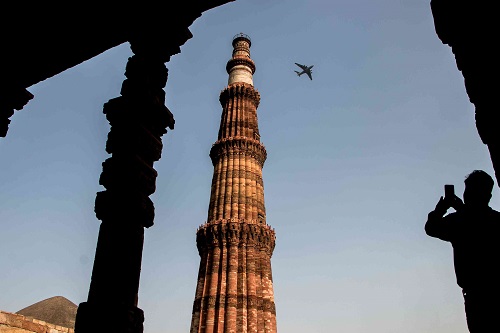Delhi, India’s capital and third-largest city, is home to a thousand years of history. From the 12th to the 19th centuries. Delhi was the capital of Moslem India, located in the north where the country narrows between Pakistan in the west and China and Tibet in the east.
It has long served as a crossroads for important commerce routes, as well as a key location at the entrance to the lush Ganges plain, India’s social, religious, and cultural lifeline. At present, Delhi sightseeing packages have become quite popular.
The city of Delhi is presently divided into two parts: the New and the Old. At least eight cities have been recorded on and near the site. The oldest of which is Indraprastha, which dates back to the third or fourth century B.C. There are several tales surrounding the city’s founding, as well as certain archaeological dates indicating its history.
Dhillika, the first of the mediaeval cities, was founded and fortified by the Tomar Rajputs in the 9th century A.D., but was overthrown in the 12th century by the Cauhans of Jaipur. Who built a second defensive wall. Invaders from Turkey ended Hindu control in 1193, ushering in a new Islamic era in the city. Subsequent cities were built in the vicinity of the older ones.
The Red Fort
The Red Fort is located on the west bank of the Yaumana River, near the eastern edge of Delhi’s walled city. It was constructed between 1639 and 1648 under the guidance of two architects as a residence and administrative centre.
It is a powerful war-like edifice with octagonal and circular bastions, as well as two symmetrical watchtowers, overseeing its red sandstone walls, which enclose an irregular octagon 3,200 by 1,600 feet and rise to 100 feet high.
A deep moat surrounds it, which is fed by the river to the east. Of the original five great gates, only the Lahori Gate (main entrance) in the west wall and the Delhi Gate in the south wall remain.
Inside the Lahori Gate sits Chata Chauk, a shopping arcade that was once the home of Shah Jahan’s court. Beyond this is the Drum House, or Hathipol, which serves as a parking lot for guests’ elephants.
The intricate carvings in the sandstone were previously painted in gold and vivid hues, and they are typical of late Mughal design. Much of the inner fort’s original structure has been destroyed, particularly during the Indian Mutiny of 1857, and lawns and gardens have taken their place inside the walls.
The Hall of Public Audience, located between the inner court and the royal palaces, served as the capital’s administrative hub as well as a spectacular showplace. Much of its opulence must now be imagined. Bbut the marble canopied throne with its classically inlaid marble backdrop still exists.
Six small palaces lined the fort’s eastern wall, housing the royal household’s quarters, including the harem. They were linked by the Nahri-Bahisht, or Stream of Paradise, a tiny canal with fragrant waters. Five of these gem-like structures are still standing.
“Victory City” Fatehpur Sikri
The tomb of Shaikh Salim Chrishti at Fatehpur Sikri has been visited by Hindu and Muslim pilgrims for 400 years. It was built by the Mughal Monarch Akbar to honour a Muslim mystic who promised the emperor not one. But three sons after assuring him that his dearth of offspring was not permanent.
To commemorate the birth of the first of these sons the next year. A large mosque and a new capital were built at Sikri, and when the shaikh died in 1572. His mausoleum was added to the site.

